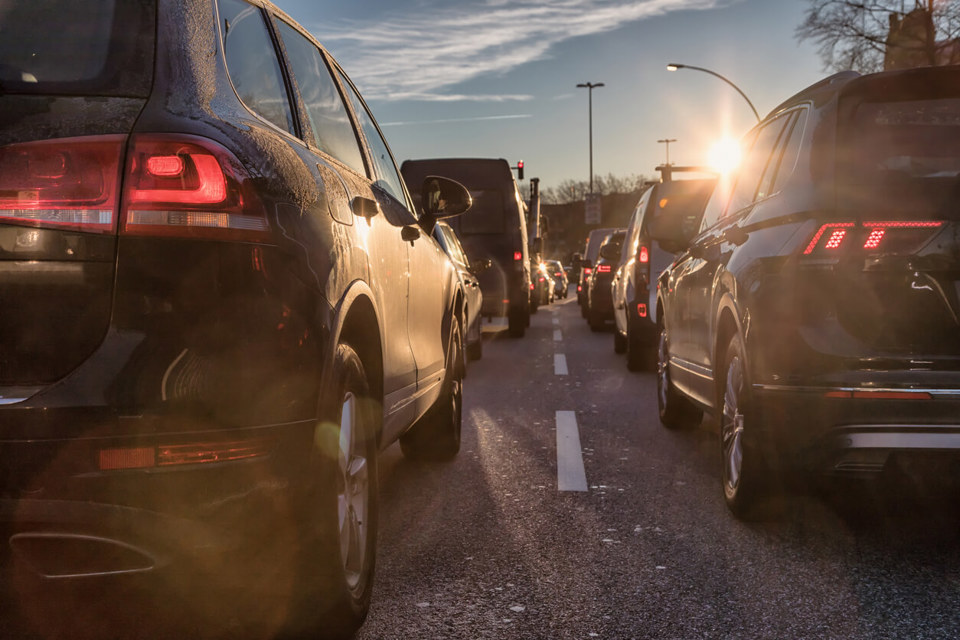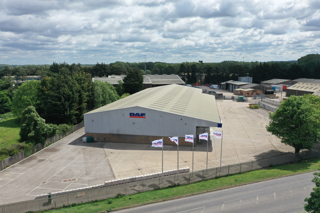There were more than 1.35 million traffic jams on the UK’s major roads in the past year, costing drivers an estimated £9 billion, new research from Inrix suggests.
The causes of the five worst queues ranged from fuel spills to broken down lorries.
November 2016 was the worst month in terms of volume with over 169,000 traffic jams on the UK’s major roads – 50% worse than average.
However, traffic jams across the month of April proved the most severe, with the research revealing they were 24% worse than average.
The year’s worst traffic jam occurred on 4th August 2017 on the M5 Northbound by Junction 10. Traffic tailed back 35 miles at the peak, and the jam lasted 15 hours, resulting in an estimated cost of £2.4 million to road users.
The cost of traffic jams is composed of the value of wasted time, fuel and unnecessary carbon emissions. Estimates were made based on assumptions about trip purpose and the fuel consumption of the average vehicle, with national averages used as a basis for these values.
Dr Graham Cookson, chief economist at Inrix, said: “While queuing is considered a national pastime for many Brits, nothing is more frustrating than sitting in traffic and Inrix Roadway Analytics shows it’s a costly activity.
“Jams can be caused by all kinds of incidents but the Inrix Incident Platform shows that fuel spillages, emergency repairs and broken down lorries contributed to the biggest pile-ups this year.
“As we head into November, the worst month for traffic jams last year, we advise motorists use the latest real-time traffic technology to keep up to date with the situation on the roads.”
RAC roads policy spokesman Nick Lyes said: “We now have record numbers of vehicles and a road network that struggles to cope with the increased volume of traffic. This is very clearly demonstrated on a daily basis with congestion at key pinch-points around the country.
“Sadly, the fragility of the road network is exposed whenever there is a major incident on a motorway. The fall-out effect of motorists seeking alternative routes causes serious traffic jams in surrounding areas, often bringing gridlock to towns and cities as a result.
“While clearing the aftermath of a major motorway accident is understandably time-consuming, more needs to be done by all the agencies involved to speed up reopening and to improve diversion routes."
RAC research has found that 56% of motorists believe congestion on the UK’s major roads, which are responsible for carrying two-thirds of all traffic, has increased. This is very worrying finding as motorways, high-speed dual carriageways and A-roads only make up 13% of the UK’s road network by length.
In addition, 61% of drivers surveyed said congestion and journey times on motorways had worsened in the last year.
The Government’s Road Investment Strategy is starting to add capacity on motorways, but the associated roadworks inevitably cause short-term traffic pain ahead of the longer-term gain from the creation of smart motorways where traffic flow is controlled by variable speed limits.
Lyes concluded: “In urban areas, authorities should look at congestion holistically and consider all measures available to them to improve traffic flow such as better traffic light sequencing and incentivising utility companies to carry out roadworks more quickly, something which the Government is currently consulting on.
“Drivers can also reduce the impact of being caught in congestion by planning journeys before they get in their vehicles.”
Monthly Summary of UK Traffic Jams
The ‘average impact’ is calculated by multiplying the average duration of a traffic jam with its average length.
|
|
All FRC 1 and 2 Roads |
||
|
Month |
No. of Traffic Jams |
Impact of Traffic Jams |
Average Impact |
|
September 16 |
135,135 |
12,820,180 |
95 |
|
October 16 |
136,255 |
12,664,459 |
93 |
|
November 16 |
169,931 |
16,290,137 |
96 |
|
December 16 |
115,280 |
11,324,131 |
98 |
|
January 17 |
101,272 |
8,346,117 |
82 |
|
February 17 |
89,925 |
10,071,818 |
112 |
|
March 17 |
96,167 |
10,834,639 |
113 |
|
April 17 |
71,519 |
9,207,443 |
129 |
|
May 17 |
115,546 |
11,418,822 |
99 |
|
June 17 |
118,633 |
12,118,544 |
102 |
|
July 17 |
104,851 |
11,163,833 |
106 |
|
August 17 |
102,895 |
12,385,246 |
120 |
|
Year to Date |
1,357,430 |
138,645,368 |
104 |
Worst Traffic Jams in UK in Past 12 Months (excluding Roadworks)
The cost is composed of the value of wasted time, fuel and unnecessary carbon emissions as a result of the delay imposed on drivers by these traffic jams. The costs are estimated by making assumptions about the trip purpose and the average vehicle.
|
INRIX Ranking |
Date |
Road & Direction |
Junction |
Duration (Hours) |
Max Length (Miles) |
Economic Cost |
Original Cause |
|
1 |
04/08/17 |
M5 - N |
J10 |
15 |
35.9 |
£2,360,590 |
Accident / Fuel Spill |
|
2 |
07/04/17 |
M6 - N |
J21 |
8 |
31.0 |
£1,176,400 |
Emergency Repair |
|
3 |
25/08/17 |
M6 - N |
J17-23 |
8 |
26.4 |
£967,454 |
Broken down lorry |
|
4 |
29/11/17 |
A406 - W |
A109 |
15 |
14.3 |
£961,595 |
Accident |
|
5 |
13/12/17 |
M6 - N |
J32 |
10 |
20.4 |
£903,400 |
Fire / Emergency Repair |
The top five worst traffic jams across the UK
|
INRIX Ranking |
Date |
Road & Direction |
Detailed Explanation |
|
1 |
04/08/17 |
M5 - N |
Two lanes closed and queueing traffic due to accident involving two lorries which created a fuel spill. |
|
2 |
07/04/17 |
M6 - N |
One lane closed, delays and very slow traffic due to emergency repairs |
|
3 |
25/08/17 |
M6 - N |
A number of lanes were closed at various points along the M6 through the roadworks after a number vehicles broke down and required recovery. Debris also found in the road. |
|
4 |
29/11/16 |
A406 - W |
Two lanes closed, severe delays and queueing traffic due to accident. Only one lane open since 08:00, after a crash at 07:30. |
|
5 |
13/12/16 |
M6 - N |
Three lanes closed and queueing traffic due to emergency repairs requiring resurfacing work following earlier trailer fire. |





















Login to comment
Comments
No comments have been made yet.